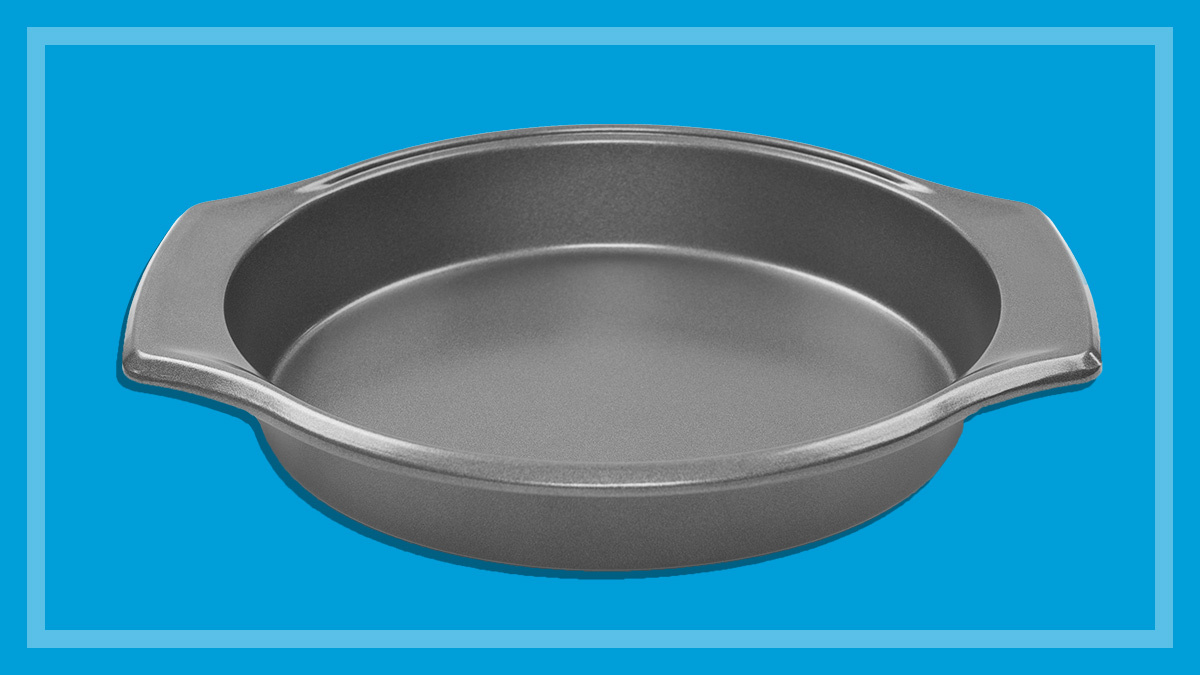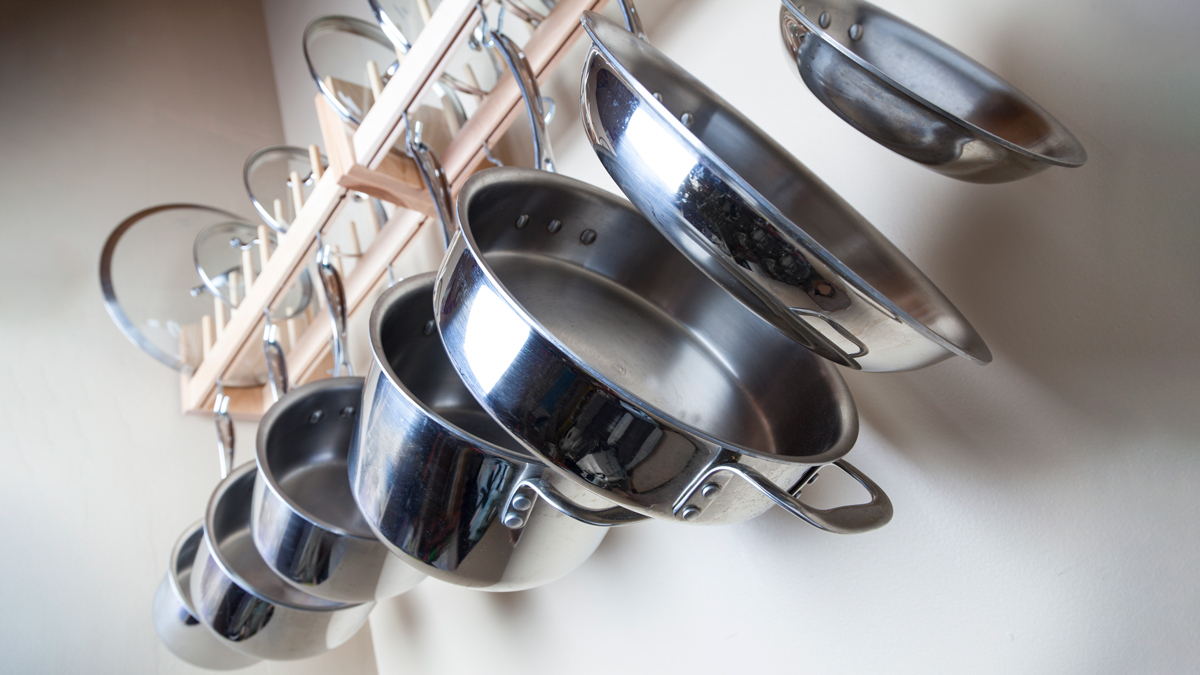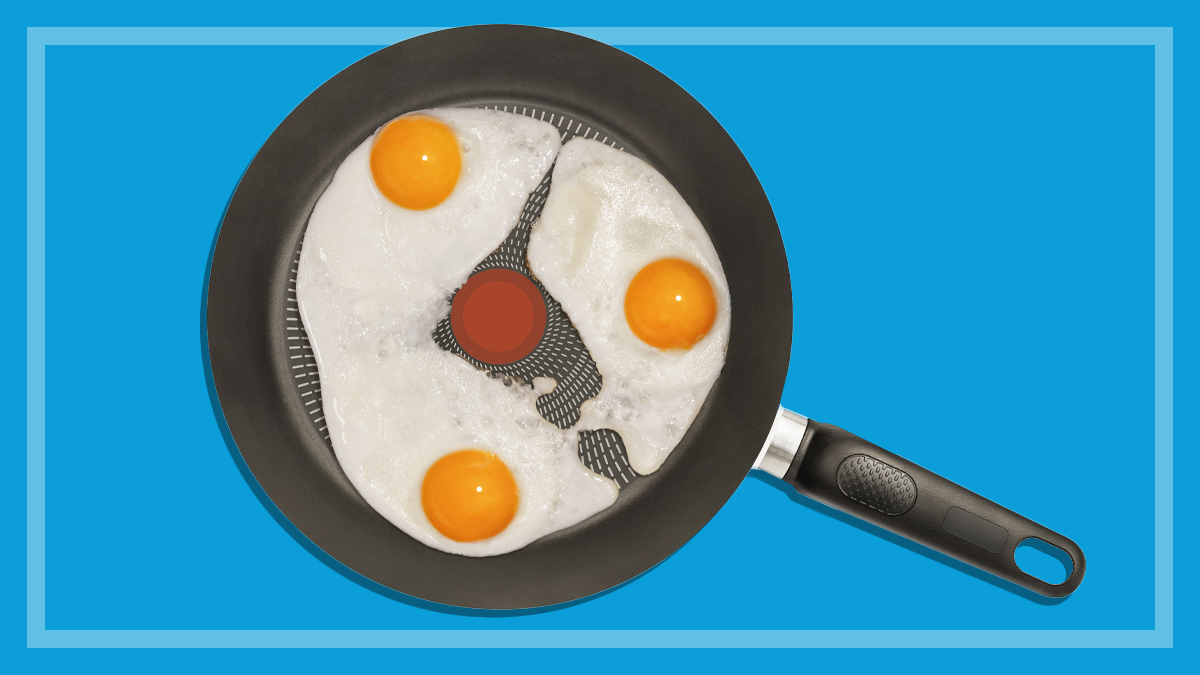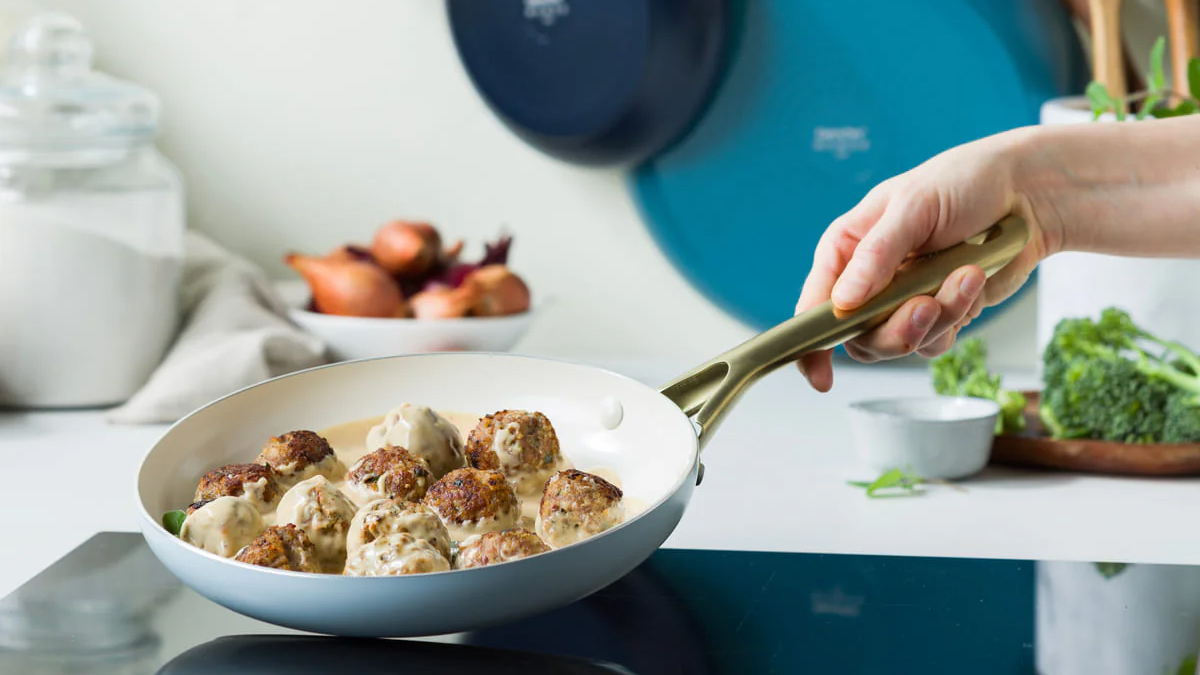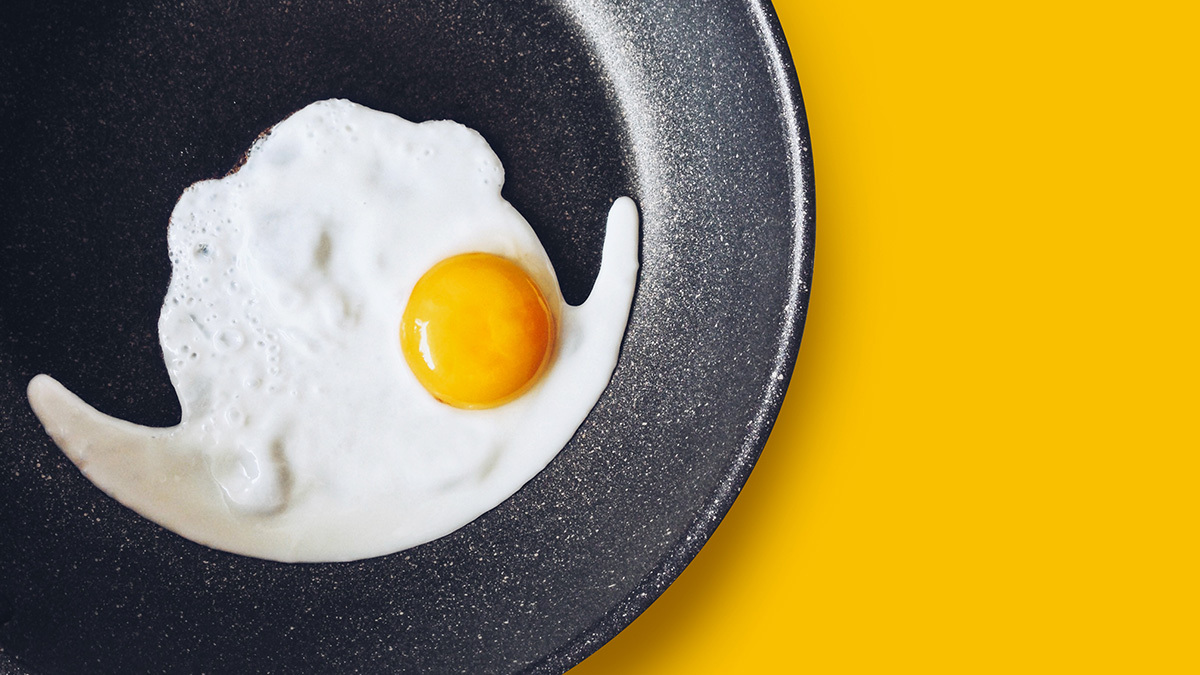Get our independent lab tests, expert reviews and honest advice.
Cake tin buying guide
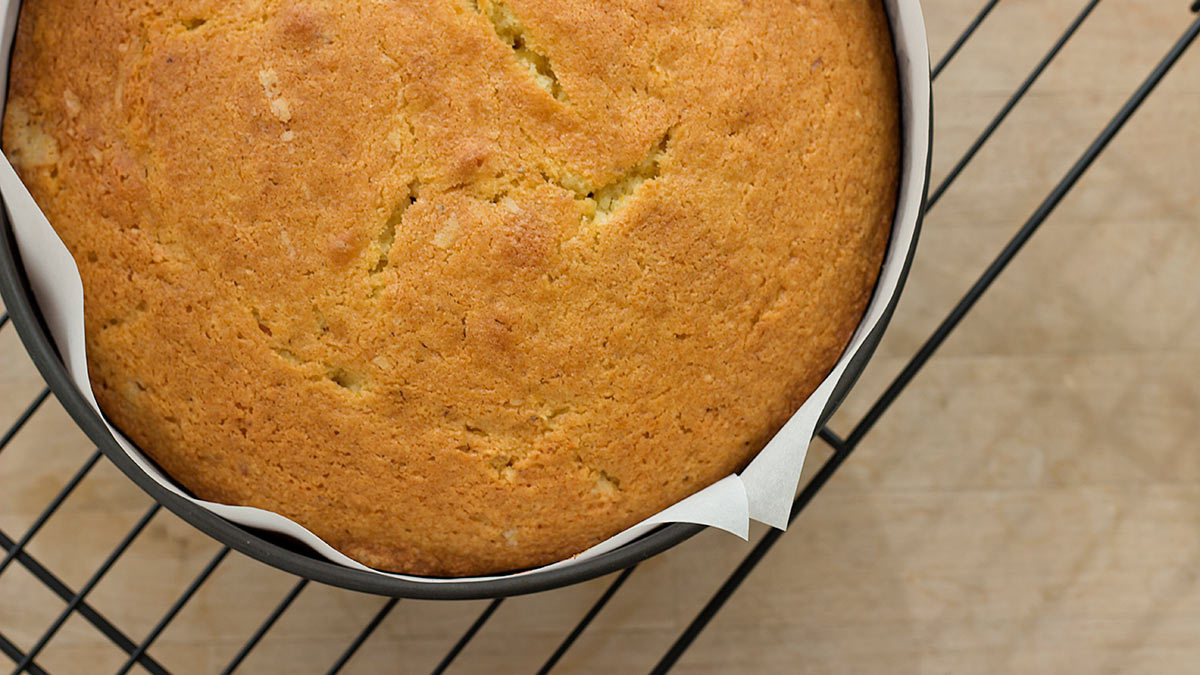
A good cake tin can serve you well for many years and produce enviable cakes every time. But what are the key features to look out for?
On this page:
- What size cake tin is best?
- How deep should a cake tin be?
- What colour cake tin should you use?
- Cake tin materials: pros and cons
- Other features to consider
- Other cake pan types
What size cake tin is best?
Cake tins (also known as cake pans) come in several shapes and sizes, and your cake recipe will usually specify the ideal width to suit the amount of batter being used. If there’s too much batter in your cake tin, it could overflow or appear too domed, or take longer to cook. Too little, and it could be ready sooner than you think, and appear shallower than expected.
CHOICE Expert Tip: When measuring your cake tin’s diameter, make sure you measure from the inside walls rather than the outside.
In Australia, 20cm is a common cake tin width which is what we’ve focused on in our latest cake tin reviews (equivalent to an 8-inch pan if you’re converting from US recipes or old cookbooks). Another common size is 23cm (9 inches). Manufacturers will usually release a range of sizes from the same line of tins, so you might want to consider getting a set.
If you don’t have the right cake tin size to hand, you’ll need to adjust the proportion of ingredients accordingly or the cooking time and temperature. A wider cake tin than the ingredients ask for means the cake will cook faster. For example, a 23cm cake tin compared to a 20cm cake tin means the batter is spread across a wider surface area, so some experimentation may be necessary for best results.
How deep should a cake tin be?
Just like width, the depth of a cake tin matters depending on what you’re making. A good all-round size is 5cm (measuring from the inside of the pan with a ruler). Shallow cake tins are great for layer cakes as they save you from cutting a deeper cake in half, while a deep cake tin can really make a statement for wedding cakes. “Deep cake tins are best for heavy dense cakes such as fruit cakes and yeast cakes,” advises CHOICE’s home economist Fiona Mair. “The high sides will protect the cake as there is less exposed surface area for moisture to escape, so the sides won’t dry out. It also prevents the cake from ‘doming’ too much.”
Cakes in deep tins may need to bake for longer, but at a lower temperature.
CHOICE Expert Tip: If you don’t have a deep cake tin, you can double line a cake tin with baking paper, making a collar that sits 5cm above the cake tin.
What colour cake tin should you use?
It may be hard to believe, but the colour of your cake tin can have an effect on its baking time and how dark the sides and bottom get. A dark cake tin works like a dark-coloured house on a hot day: it absorbs more heat. This means you may need to reduce the cooking time (unless you want more browning). On the other hand, a light-coloured cake tin will reflect the heat so they’re good for delicate sponge cakes.
Cake tin materials: pros and cons
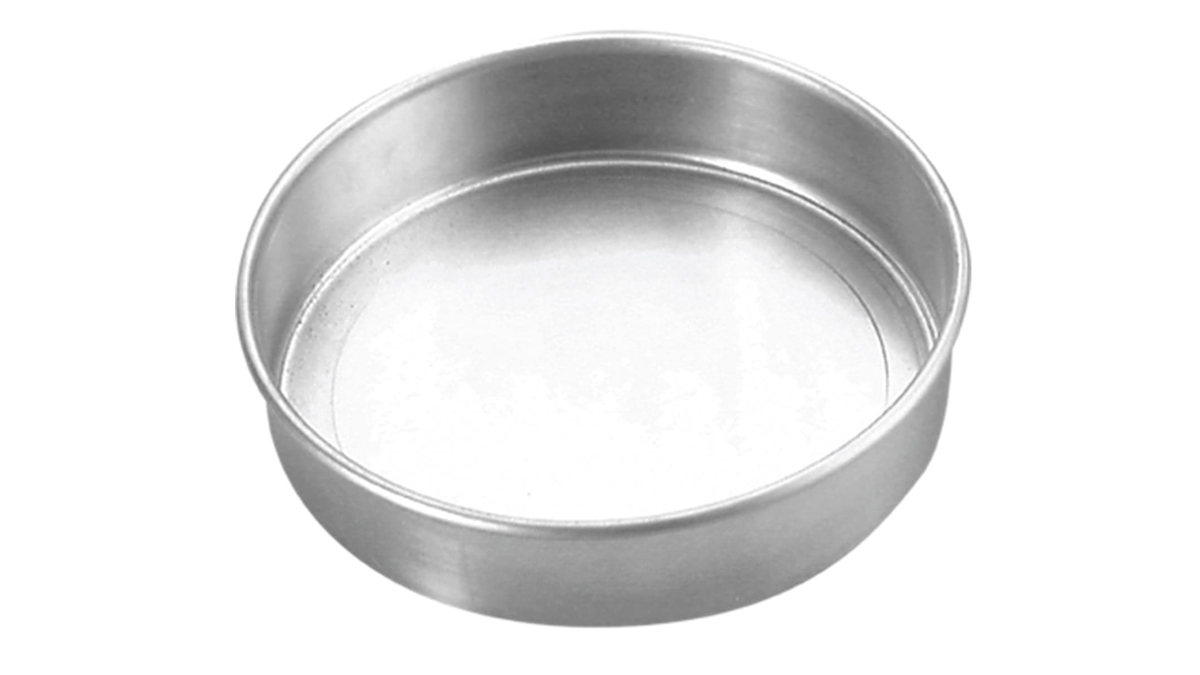
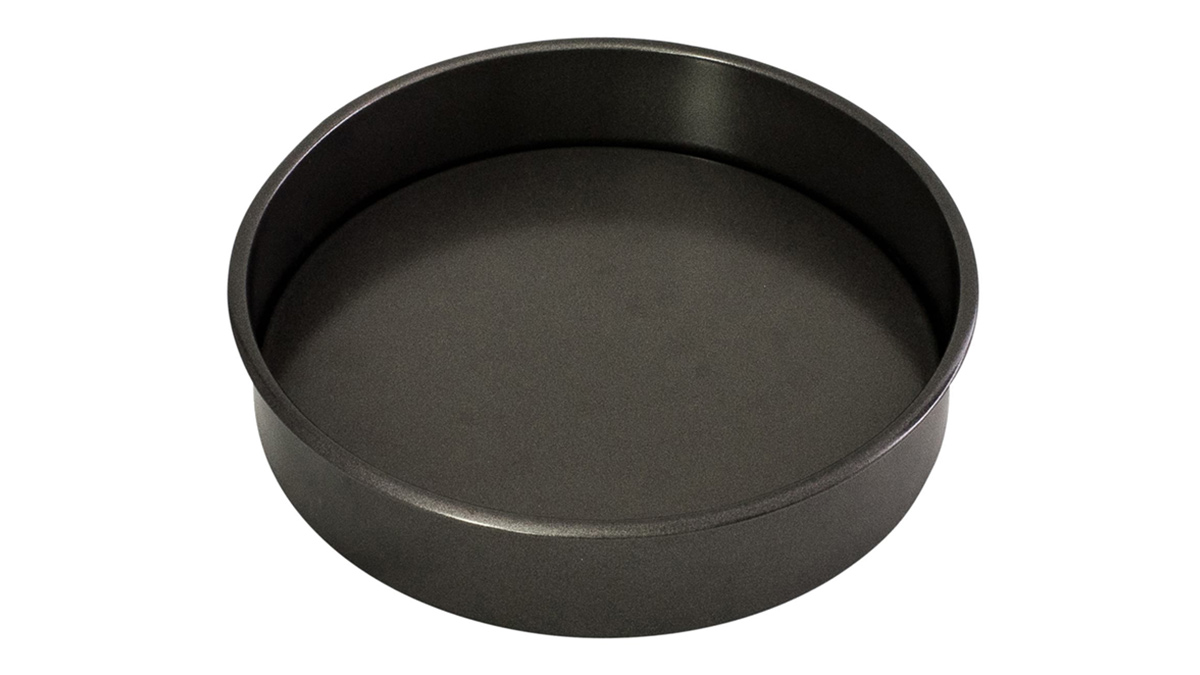
Aluminium
Many cake tins have an aluminium body which may be anodised (treated using an oxidation process to make it hardened and non-reactive). It provides a largely non-stick surface that’s excellent at conducting heat. Fiona classifies anodised aluminium as the best material for cooking. It’s actually part of the aluminium body, so it won’t start chipping off like a non-stick coating might.
Meanwhile, a regular aluminium cake tin is cheap, lightweight, and great for even browning. So long as you line your tin with greased baking paper, there should be no problem with sticking. While there have been concerns in the past about untreated aluminium leaching into food, there’s no definitive evidence about this being dangerous. However, you may get a metallic taste if you’re cooking acidic foods, and the surface may become discoloured. They may also be less durable, and dent easily if dropped.
Non-stick coatings
There are a range of non-stick cake tins available, often with a stainless steel body material. Look for ones which claim to be free of harmful chemicals such as PFOA, BPA and PTFE.
Non-stick cake tins are convenient and relatively inexpensive but you have to be careful not to scratch the surface, particularly when cleaning. This could reduce the cake tin’s effectiveness and cause the coating to peel off. You should still use baking paper to line your cake tin as it may not be 100% foolproof. It will also help protect the non-stick surface.
Some non-stick coatings can’t be used at excessively high temperatures as they may release chemicals or become damaged.
Silicone
Flexible silicone bakeware won’t rust, it’s light and easy to store, and can be found in fun, bright colours. Our past test results suggest they can cook well with little or no difference to metal cake tins (although they do tend to cost more).
Silicone can also be put straight in the dishwasher without rinsing. However, some are so floppy that it can be tricky when transferring the bakeware to the oven when they are filled. And you’ll still need to grease it, even if they’re billed as “non-stick”. Silicone bakeware may be best for smaller amounts of batter, such as making cupcakes, as they can be easily turned out.
Cast iron
While not as common, cast iron cake pans have the same advantages as cast iron cookware. A good one will last you years, especially when kept regularly seasoned with oil. They can resist very high heat, can cook evenly, are non-stick (when seasoned) and are recyclable. However, they’re relatively heavy.
Other features to consider
Storage
Look for a cake tin that can be stacked easily with other types of bakeware.
Cleaning
Many cake tins are dishwasher safe. Some may need soaking or light scrubbing, but don’t use abrasive materials.
Handling
When placing the cake tin in and out of the oven using gloves there may be a limited grip area so be careful when carrying a load. Some have handles rather than a lip to make the job easier.
Other cake pan types
Springform
These cake tins have a removable base and are locked in place with a clasp/latch. When your cake has cooled, you simply unlock it for easy removal of the cake without having to turn it upside down. However, the batter can leak out of the bottom if it’s not thick enough. It can also be tricky to put the base back in place – you have to make sure the base is not inadvertently placed upside down which could also cause leakage. Look for a ridged bottom to minimise leakage as this can help retain some of the batter.
“The latch on the springform tins can become loose and rust, so they need to be dried well,” advises Fiona. “Avoid the dishwasher.”
Loose base
Like the springform tin, these are designed to make cake removal easy. However, the base is not locked in place so leakage may occur and the base can be easily moved out of place if you grab it from the bottom. It may also be unclear which way to place the base.
Ring or tube cake tins
You may encounter cakes with a hollow in the middle such as Bundt cakes, pandan cakes or ciambella. The tins they’re baked in may have intricate moulds and need more greasing to ensure they come out smoothly with minimal damage. The ring in the cake tin helps these deep cakes to cook more quickly and evenly.
Loaf tins
These are good for banana bread, madeira cake and baking loaves of bread.

